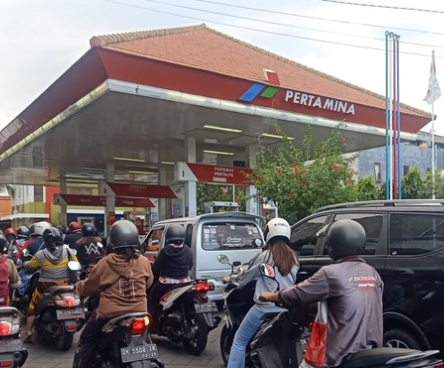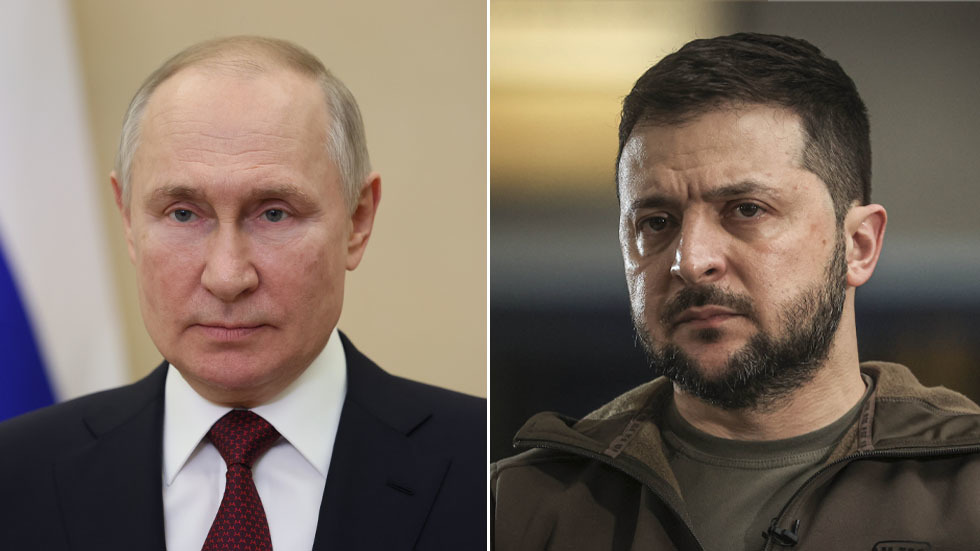
The foto has taken from moscowtimes
STRATEGIC ASSESSMENT. The fate of a devastated salt-mining town in eastern Ukraine hangs in the balance this week in one of the bloodiest battles of Russia’s invasion. Russian forces used jets, mortars and rockets to bombard Soledar in an unrelenting assault. Soledar’s fall, while unlikely a turning point in the nearly 11-month war, would be a prize for a Kremlin starved of good battlefield news in recent months. It would also offer Russian troops a springboard to conquer other areas of Donetsk province that remain under Ukrainian control, such as the nearby strategic city of Bakhmut.

On the battlefield, a Ukrainian officer near Soledar told The Associated Press the pattern is that first, the Russians send one or two waves of soldiers, many from the private Russian military contractor Wagner Group, who take heavy casualties as they probe the Ukrainian defences.
When Ukrainian troops suffer casualties and are exhausted, the Russians send a fresh wave of highly-trained soldiers, paratroopers or special forces, said the Ukrainian officer, who insisted on anonymity for security reasons. Ukraine’s military said late Wednesday that Russian forces had suffered “huge losses” in the Soledar fighting. It is not possible to independently verify either side’s claims. Kremlin spokesman Dmitry Peskov stopped short of declaring the municipality’s capture, telling reporters that Russian forces had achieved “positive dynamics in advancing” in Soledar.
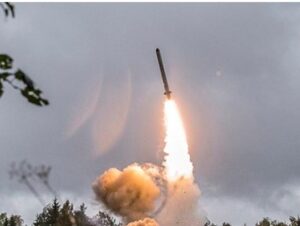
Soledar, known for salt mining and processing, has little intrinsic value apart from the salt and gypsum mines, but it lies at a strategic point 10 kilometres north of the city of Bakhmut, which Russian forces want to surround. Taking Bakhmut would disrupt Ukraine’s supply lines and open a route for the Russians to press toward Kramatorsk and Sloviansk, Ukrainian strongholds in Donetsk province. Soledar’s fall would make “holding Bakhmut much more precarious for Ukraine,” Michael Kofman, the director of Russia Studies at the CAN nonprofit research group, noted. The war of attrition, with heavy casualties, may make a Russian victory as deadly as a defeat.
The Wagner Group’s maneuvre
The Wagner Group, which now reportedly includes a large contingent of convicts recruited in Russian prisons and constitutes up to a quarter of all Russian combatants in Ukraine, has spearheaded the attack on Soledar and Bakhmut.
Delivering victory in Soledar and Bakhmut after months of Russian frontline difficulties would help Prigozhin, who has criticized Gerasimov, increase his clout in what has emerged as somewhat of a rivalry with Russia’s military leadership.
Russian troops have struggled to gain control over Donetsk, Luhansk, Kherson and Zaporzhizhia, parts of which the Kremlin illegally unilaterally annexed in September after incorporating the Crimean Peninsula in 2014.
When Russian forces withdrew from Kherson, the battle heated up around Bakhmut.
Putin identified the Donbas region as a focus from the war’s outset, and Moscow-backed separatists have fought there since 2014.
Russia captured almost all of Luhansk during the summer. Donetsk escaped the same fate, and the Russian military subsequently poured manpower and resources around Bakhmut. The Institute for the Study of War said Russian forces were up against “concerted Ukrainian resistance” around Bakhmut.
An exceptional feature of the fighting near Bakhmut is that some has taken place around entrances to colossal disused salt mine tunnels, which run for some 200 kilometres, according to Western intelligence reports.

Fighters from the Wagner Group have completely surrounded the Donbass town of Soledar and are now clearing the extensive tunnel network in the town’s salt mines, the head of private military company, Evgeny Prigozhin, claimed.
The news came after weeks of intense battles in an area which sources from both sides, but especially those which are pro-Kiev, have described as a “meat grinder.” Despite the sustained, albeit slow, Russian advance, the Ukrainian authorities have chosen not to retreat at the cost of tremendous losses. Prigozhin estimated that 500 Ukrainian troops died in the final stages of the fighting, after Wagner forces encircled them. That’s on top of others who perished previously. The entire town is littered with the bodies of Ukrainian servicemen,” he said.
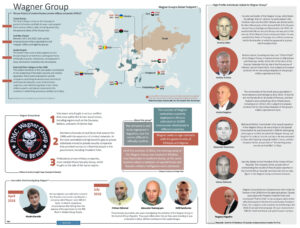
While gunfire can still be heard in the western outskirts of Soledar, it is clear now that Russian forces will emerge victorious. Their victory will, in turn, collapse a 70 km-long section of Kiev’s defenses.
Soledar is a conglomeration of several settlements established around salt mines and railway stations. In 2001, when Ukraine last conducted a census, around 13,000 people lived here. The town stretches along the right bank of the Bakhmutka River from southeast to northwest.
In late 2022, it became an infamous urban warzone. In peaceful times, however, it was known as the largest source of mineral salt in Central and Eastern Europe, covering around 80% of Ukraine’s needs. Deep salt mines have also made Soledar a tourist and leisure destination with tours around the caves.
There was, however, a second, military purpose to the city and its industries, as was typical for the Soviet Union. In the case of Soledar, several of its depleted mines were used as spacious and secure military warehouses.
Last year, this previously disregarded aspect of Soledar’s identity became its most prominent feature. Salt production stopped, and the gypsum plant ceased operating; the only visitors around were now Ukrainian soldiers – and developing asthma was the least of their problems.
Soledar became the focus of Russian offensive operations last May, after troops seized Popasnaya and breached the first line of Ukrainian defenses. The Ukrainian command turned the town into a major piece of its second defensive line, a stretch of fortifications along the Dzerzhinsk – Bakhmut (Artyomovsk) – Soledar – Seversk line.
Up until early August, fighting continued around Soledar: Russian forces were busy cutting off the pocket of Ukrainian forces near Severodonetsk and Lisichansk, and gradually advancing toward Soledar and Artyomovsk, seizing fortifications at Pilipchatino and Pokrovskoye along the way. Wagner units and the 6th Cossack Regiment of Lugansk gradually moved into the combat area. Russian troops enjoyed uncontested superiority in terms of artillery, but there were some early signs of ‘ammunition hunger’ looming on the horizon.

The Russians were unable to penetrate Ukrainian defenses in one burst. The troops, exhausted after a major operation to liberate the entirety of the Lugansk People’s Republic (LPR), simply could not break through the numerically superior Ukrainian forces.
Ukrainian defenses in the area consisted of the 93rd Mechanized Brigade, supported by numerous units of the Territorial Defense Forces. The second line was formed by the 24th Mechanized Brigade, which had suffered losses during the earlier fighting in Popasnaya. Combined, these forces were sufficient to hold off the attacks along most of the Artyomovsk-Soledar-Lisichansk line, a stretch of fortifications that would not be breached until December – a development that would ultimately spell defeat for the Ukrainians.
Yet, over the summer of 2022, Ukrainian defenses in the area held strong – so much so that one of Ukraine’s top media spokesmen, Aleksei Arestovich, boasted that the Russians would not take a single Ukrainian town beyond Lisichansk, including Artyomovsk and Soledar.
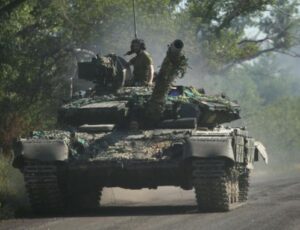
The frontline stabilized, and the armies switched to positional warfare. In the Donbass farmland, fields are separated by strips of trees to prevent soil erosion; these strips were fortified and used as strongpoints. The Russian troops wrestled the farmland away from the Ukrainians, 500 meters at a time – however, an unconventional approach was required in order to achieve a decisive breakthrough.
Until then, Russian assault groups, under the cover of artillery fire, had been working their way slowly, but steadily, through the Ukrainian defenses. Their first successful operation, which marked the start of the battle for Soledar, was the capture of the Knauf Gips gypsum plant in early August, by the 6th Cossack Regiment of the LPR army and Wagner units. Then, using the plant as a foothold, the Russian forces engaged in months of fighting in the southern part of the city, which consisted of private residences, several blocks of multistory residential buildings, a gypsum plant, a gypsum quarry and a refractory materials factory.
The fighting dragged on for the rest of the summer and into the fall. After the pullback from Kharkov Region and Krasny Liman, a new tug-of-war started over Peski, Marinka and Avdeevka. Later, the Russian army pulled out of Kherson, but managed to hold Svatovo. In the meantime, the situation around Soledar and Artyomovsk remained unchanged. Wagner forces, in cooperation with units from the Donbass republics and assisted by Russian aviation and artillery, lay the groundwork for a successful breach of the multi-layered Ukrainian defenses.

Second, it was decided to start recruiting among prison inmates. Subject to strict discipline, they were offered equal treatment to other soldiers and a six-month contract, after which it was promised that they would be pardoned and their criminal records cleared. The first unit made up of such volunteers set out for the front in July, and those who survived until January went home, as shown in videos published by Prigozhin’s affiliated media.
The whole enterprise would not be as effective if not for the training system, in which assault units were actually prepared for this role, without wasting time on other skills that would be useless in this context. Another factor was Wagner’s combat control system that enabled coordination between many small groups.
The front line in Soledar was moving north, rather slowly. But the Ukrainian army was suffering losses. The 93rd Mechanized Brigade, which had stopped Russians near Soledar in August, was shattered so badly that it lost combat effectiveness and was pulled back for reinforcements.
It was replaced by the 128th Mountain Assault Brigade, which was supposed to have been drawn out of combat to be replenished after heavy fighting on the right bank of Dnieper in Kherson Region. But the Ukrainian general staff had to draw on reserves, so there wasn’t enough time to replenish the 128th brigade before it was put up against Wagner’s assault troops in Bakhmutskoye and Soledar.
In the latter, fighting had intensified along the flanks. The Russians started to move forward through the industrial areas of Artyomovsk, opening up possibilities for moving into the southern outskirts of Soledar and for attacking Yakovlevka from the north.
Yakovlevka was seized on December 18, which enabled further advancement towards Soledar. Ukrainians undertook a number of counter-attacks, trying to use the wood strips in the fields for their defense. The fall of Yakovlevka was a turning point that defined future success in Soledar.
The situation in the industrial area of Artyomovsk was different. The assault operation stopped after the frontline had shifted several kilometers away from the highway. Ukraine’s government and Western media described this as a victory, claiming that the Russians were evidently unable to seize Artyomovsk and had to shift the focus to a minor target – Soledar. In reality, the battles in Artyomovsk and Soledar were interconnected.
By advancing east of Artyomovsk, the Wagner Group took the upper hand and was able to storm Bakhmutskoye. Since the summer, the frontline ran through the village, splitting it into two parts, with the Ukrainian Armed Forces setting up a fortified area in the local school and equipment storage facilities in its northern part. After this, events took a faster course. On December 26, the Ukrainians were driven out of the school building and, on January 9, Bakhmutskoye was liberated almost completely and the Russian storm units moved on to Dekonskaya railway station.
Meanwhile, Ukraine’s defense in Soledar suffered an operational crisis, with the garrison stationed in the town attacked at the southern and northern flanks and unable to stop the Russian offensive. Kiev’s troops were exhausted with some fighters fleeing from their positions, according to Arestovich.
On January 5, the crisis Ukraine’s defenses became apparent, with its Forces withdrawing from the southern part of the town. On January 6, fighting broke out on the premises of salt mine No. 1-3, located downtown. The following day, Ukraine’s 46th Airmobile Brigade, one of the freshest units on the battlefield, was moved there from Artyomovsk to reinforce the defense – or rather, to cover retreat of Kiev’s fighters, in reality.
On January 9, Prigozhin reported that there was fighting for control of Soledar’s municipal buildings. By January 10, the Russians had taken control of the town center and surrounded the Ukrainian units that hadn’t retreated to Soledar’s western parts. They were then given time until midnight to lay down their arms.
At the moment it’s hard to say how effective this rhetoric might be for encouraging the Ukrainian troops to surrender. There have been cases of some soldiers giving up, but there have also been quite different cases – like, for example, that of five Ukrainian troops who preferred to jump off a five-story building than submit to Russian custody during the assault of Soledar.
By late Wednesday, Russian troops had mostly cleared central Soledar. Clearing the salt mines is expected to take more time. According to open-source intelligence, Ukraine recognizes that mine 4 is under Russian control. and its troops to the east that point are surrounded. There is no data concerning the situation around mine 7 and railway station Sol, which have been under the control of the Ukrainian Army. These are Kiev’s last footholds in the area of Soledar and they will be hard to keep since all the supply routes are open to enemy fire.
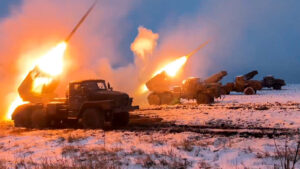
The Russian offensive is targeting not only Soledar, but also the settlements on its flanks. The village of Podgornoye is already under Moscow’s control, and an offensive is in progress to capture the settlement of Krasnaya Gora, located between Soledar and Artyomovsk. If successful, this operation will cut off Artyomovsk’s supply routes from Slavyansk in the north, leaving it only accessible from Konstantinovka and Chasovy Yar.
A Russian offensive targeting railway station Sol, Krasnopolye, and Razdolovka is also in progress. Should this be a success and the troops succeed in crossing the Bakhmutka River, it will be a serious threat to the Ukraine-controlled Seversk that is strategically important to the Ukrainian Army since it keeps both Lisichansk and Kremennaya in check.
The Ukrainian resistance in Soledar and Artyomovsk is currently weakening due to the intense Russian offensive. There is a clear shortage of battle-ready Ukrainian troops up to the challenge of withstanding the efficient offensive tactics employed by the Wagner PMC assault units.
And yet, the outcome of the Soledar offensive is up to the Russian command now. It remains to be seen within the next few weeks whether the command will take the risk of large casualties and try to step up the offensive or revert to slower tactics in crushing the Ukrainian defenses.
This is Russia’s first major victory since the withdrawals from Balakleya, Krasny Liman and Kherson and it’s important for boosting the morale of the troops. It is certainly a bitter pill for the Ukrainian Army. Whether we can expect Kiev to try and adapt to the new situation and look for out-of-the-box solutions remains to be seen. All we know now is that President Zelensky keeps promising the Ukrainian people he will recapture all of Donbass even though his troops are retreating.
Germany and Poland have sent army vehicle to Ukraine
A campaign launched by two Finnish politicians aims to ’embarrass’ Germany into providing Leopard tanks for Ukraine. Until now, no Western country has given main battle tanks to help the Ukrainian military — although France announced this week that so-called light tanks, the AMX-10 RC armoured fighting vehicles, will be supplied for the first time. The US said it would consider sending similar Bradley Fighting Vehicles as well.
But Anders Adlercreutz from the Swedish Peoples’ Party and Atte Harjanne from the Greens argue that if smaller countries with Leopard tanks give a few each, then Europe’s biggest user of the Leopards, Germany, will have no excuses left not to provide the tanks — which the Ukrainians themselves have asked for.

The Leopard 2 main battle tank was developed for the West German army and entered service at the end of the 1970s. Since then, around 3,600 have been produced and are currently being used by militaries all across Europe, including in Finland, Sweden, Denmark and Norway; Italy, Portugal and the Netherlands; as well as the Austrian, Polish, Czech and Slovak armies. Germany still has more than 250 Leopard 2s in service.
Germany’s Chancellor Olaf Scholz has repeatedly ruled out giving any of the Bundeswehr’s Leopards to Ukraine, while Defence Minister Christine Lambrecht has previously said Germany needs to keep hold of the Leopards to fulfil NATO obligations without specifying what those were. In September, Ukraine’s Foreign Minister Dmytro Kuleba said there wasn’t “a single rational argument” as to why Germany couldn’t supply Leopard tanks.
The Finnish politicians reckon a “brigade level” of 90-100 tanks would make a big impact on the battlefield and estimate they would need a few months to get Ukrainian tank and maintenance crews up to speed.
Streamlined training processes could be introduced to speed things up, with an acknowledgement that the level of theoretical and practical skills needed during peacetime is a luxury compared to time constraints in times of war.
The arrival on the battlefield of Leopard 2 tanks would provide Ukrainian forces with a major new offensive capability. But in addition to the actual tanks, there would need to be engineering crews and spare parts, plenty of ammunition and a pipeline of replacements for when the first wave of Leopards inevitably start taking damage that puts them out of commission. While some countries might be able to give more Leopards, the Finnish politicians note that other countries could provide training facilities for Ukraine’s military.





